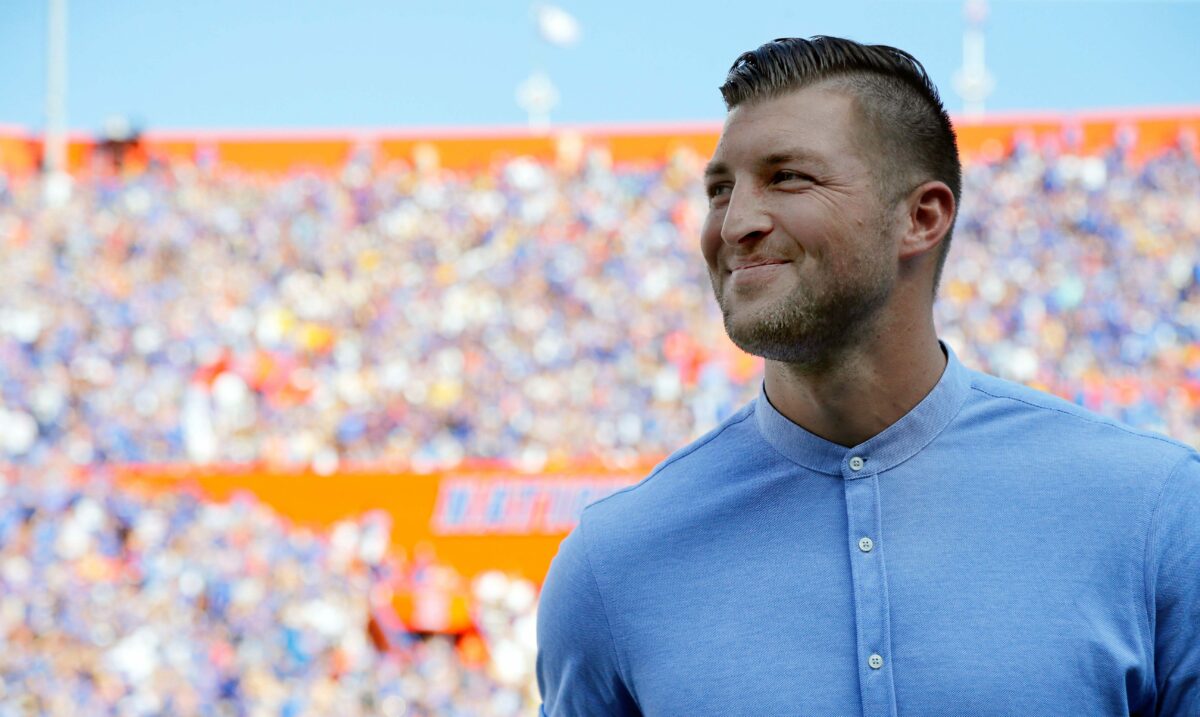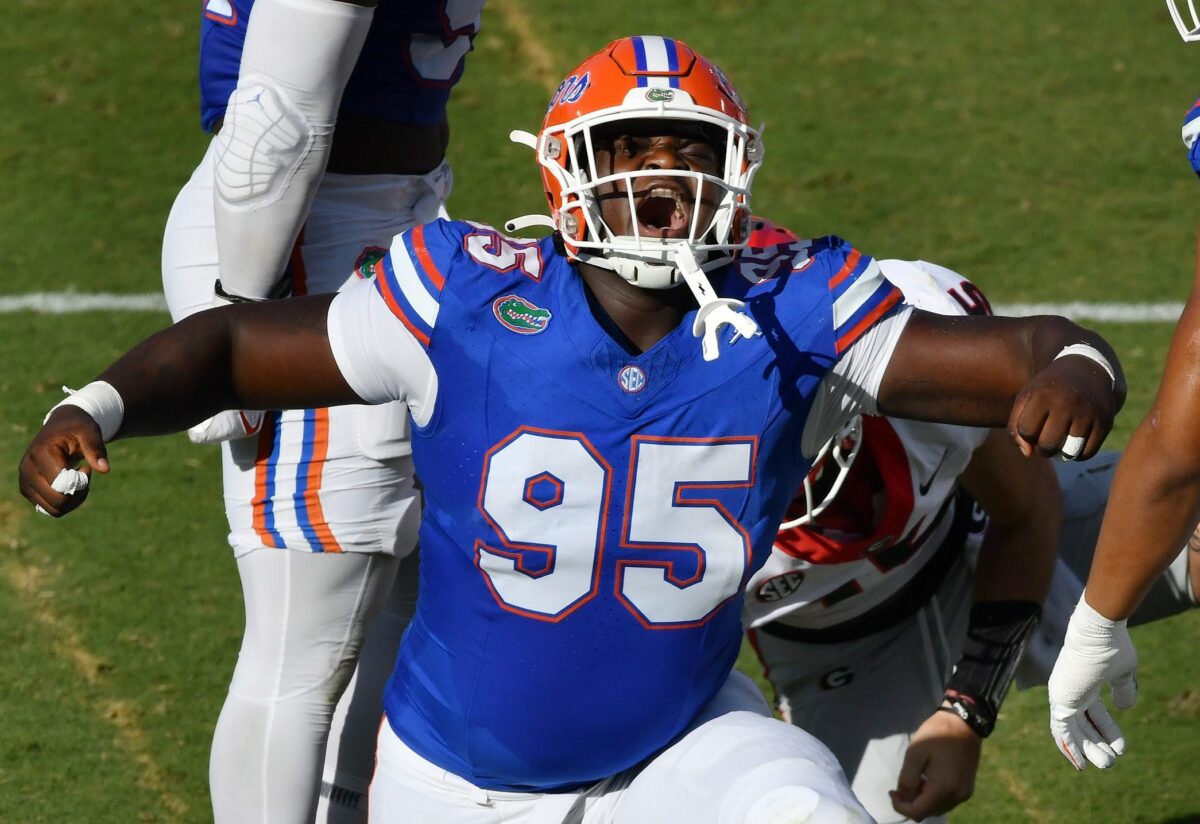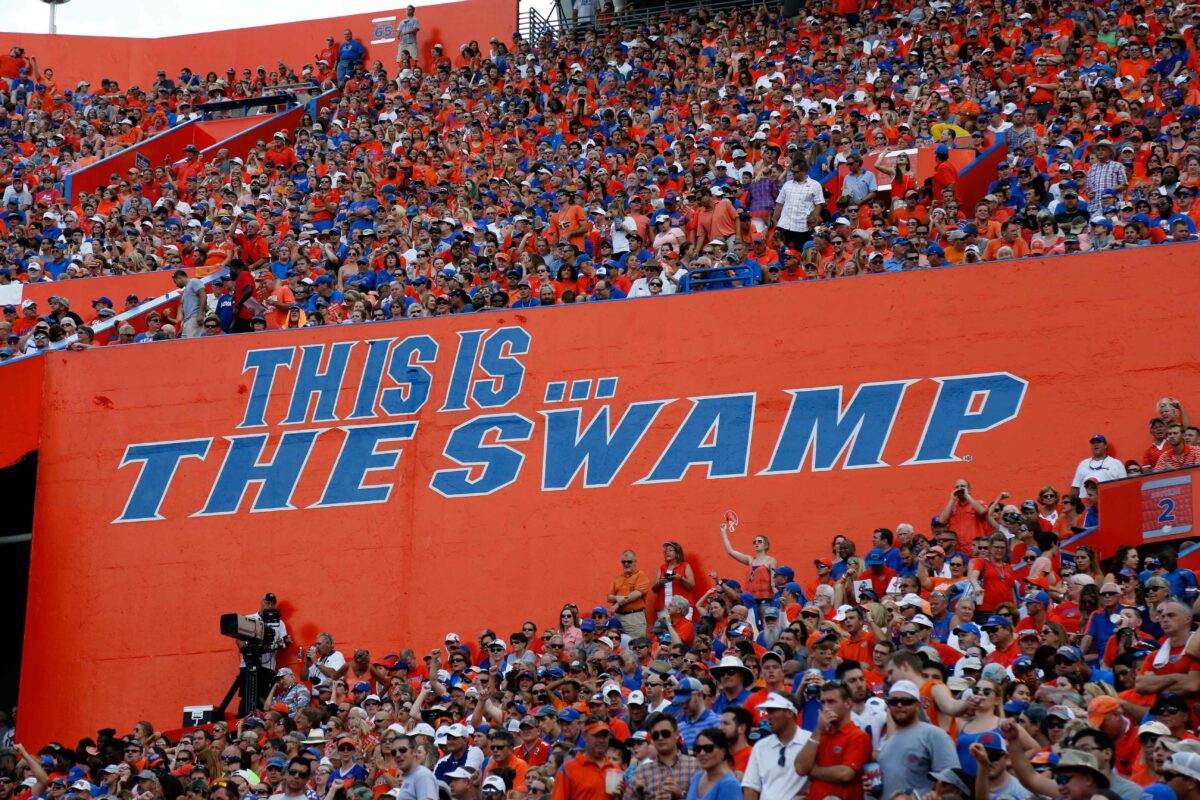For the first time since 2014, college football fans can simulate their favorite matchup of the weekend with an updated roster.
EA Sports released College Football 25 in the middle of July, but its most recent title update came just two days before Week 1 of the season kicks off for the Florida Gators. So, we ran 10 simulations of the Battle for the Florida Cup to see what EA thinks will happen on Saturday.
The results might surprise you.
Before we dive into things, let’s talk methodology. We went with 10 simulations because five sounds like too small of a sample size and more than 10 sounds laborious. College Football 25 allows you “Super Sim” games and review the stats afterward before “restarting” the matchup. We did these in batches of two, just in case the computer resets significantly when a new game is set up.
The user control went with Florida, and the difficulty was set to Heisman. Neither should affect the simulation. Quarter lengths were set to six minutes with the accelerated clock off, which allows for semi-realistic final scores.
We also moved Kam Waites into the starting right tackle spot and removed Jamari Lyons, who is injured in real life.
Now let’s go over the results.
Overall Breakdown
Florida and Miami split the 10 simulations evenly, but the ‘Canes averaged more than a field goal better than the Gators on the scoreboard. Some quick math leads us to 33.3 points per game for Miami and 29.5 for Florida, which is a greater difference than the plus-2.5 spread UF has been awarded on most major sportsbooks.
Those numbers don’t tell the whole story, though. Four of Florida’s five wins came by a one-score margin, whereas Miami won four of five by multiple scores. In other words, Miami has the better chance to make this a blowout, but if things stay competitive, Florida might have the edge.
Offense
On offense, there’s little to worry about if you’re a Gators fan. Graham Mertz averaged 296 passing yards and 2.2 touchdowns per game, while staying turnover-free for six of 10 games. Montrell Johnson Jr. put up 102.6 yards and 0.7 scores on 18.3 carries, on average.
Eugene “Tre” Wilson III led the receivers room with 83.7 yards and 0.9 touchdowns per game, but Mertz spread the ball around fairly well. Chimere Dike and Arlis Boardingham each average four catches or more per game, although the latter benefitted from a few explosive performances. Elijah Badger is the wildcard here. He can boom for 100-plus yards and multiple scores, but he also can disappear from a game.
The offensive line wasn’t terrible, averaging 1.8 sacks allowed per game.
Defense
Florida’s defense allowed 321 yards of total offense on average, mostly due to a strong run game from Miami. The ‘Canes averaged 244 rushing yards on the ground in the simulations, and their best nights led to wins. That’s where Florida is most likely to win or lose the game, according to EA Sports.
Sacks and turnovers were hard to come by for both teams. Florida failed to get to the quarterback once in half of the simulations, and only one interception was recorded throughout. Neither of the forced fumbles were recovered.
Special Teams
We didn’t look into special teams too much here, but Trey Smack was solid for the most part. He nailed 18 out of 20 field goal attempts, 10 of which came from 40 yards or farther. One of his misses was from 53 yards out.
Most of you will stop reading there, but the true video game nerds want to know how each game went, and we’ve got you covered. Here’s a quick recap of each simulation we ran ahead of Saturday’s matchup.
Florida Gives Fans a New Hope
Our first simulation saw the Gators dominate the game and carry a double-digit lead through most of the fourth quarter. Graham Mertz threw for over 300 yards and three touchdowns, and Montrell Johnson Jr. added another score on 17 carries for 132 yards. Tre Wilson III led all receivers with eight catches for 190 yards and two touchdowns (!!!), and neither team turned the ball over. Florida wins, 38-28.
The second simulation didn’t see Mertz clear 200 yards and he threw an interception, but Florida still came away with a win thanks to a touchdown by Chimere Dike with 41 seconds left on the clock. Johnson and Wilson were also less effective than they were in Game 1. In fact, this win was really on the defense. Jason Marshall Jr. forced the only turnover of the game, an interception, an Miami was held to 339 yards of total offense. Florida wins, 27-23.
The Canes Strike Back
It took until our third simulation for Miami to put the hurt on Florida. The Gators trailed 31-14 at the half, and they couldn’t cut into the deficit at all afterward. The ‘Canes ripped apart Florida’s defense for 560 total yards and seven scores (four passing, three rushing). Mertz completed more than 70% of his passes for nearly 300 yards but only one score (he also ran for a TD). Johnson had a good day, too, rushing for nearly 140 yards and a score. Jadan Baugh also scored. Trey Smack missed his lone kick, which came from 50-plus yards out. Miami wins, 52-34.
Apparently, wins come in bunches in this game. The ‘Canes won handily in our fourth simulation, although it wasn’t the same offensive clinic as Game 3. Instead, Miami did most of its damage on the ground, rushing for 262 yards and four touchdowns. Mertz crossed the 300-yard mark but threw two interceptions to three touchdowns. Johnson ran for over 100 yards but didn’t score, and it was Elihjah Badger who stood out among the receivers with 176 yards and two touchdown grabs. Once again, this loss is on the defense. No sacks, no turnovers and an inability to slow down the run game. Miami wins, 42-28.
Return of the Gators
Florida got back on the winning track in our fifth simulation. Mertz was back to Game 1 form with 319 yards and three touchdowns without throwing an interception. Once again, Badger led all receivers with 120 yards and THREE touchdowns. Johnson ran for more than 100 yards but he couldn’t find the end zone. Smack did some heavy lifting here with four made field goals, including two beyond 40 and one from beyond 50. Florida wins, 40-23.
Florida needed a 46-yarder from Smack to secure the win in our sixth simulation, marking our closest decision so far. This is the game most neutral fans are hoping to see, but it’s a weird one. Mertz was dominant, going for 364 yards and three scores with no interceptions, but Johnson barely managed 50 yards. Miami had its worst passing game so far (109 yards) but tore it up on the ground (256 yards) to compensate. Florida wins, 31-28.
Florida needs to avoid these timelines
Our seventh simulation saw both teams struggle to find any offense through the air, but Miami’s run game (267 yards, 1 touchdown) put the ‘Canes over the top rather easily. Florida trailed 24-0 at halftime, which rendered an 11-3 second half moot. Montrell Johnson Jr. was the only effective player on offense, and the defense failed to force a turnover to get back in the game. Miami wins, 27-11.
The nightmare scenario for Florida manifested itself in our eighth simulation. Graham Mertz completed 31 of 45 passes for 420 yards and five touchdowns without turning the ball over, and the Gators still lost. Pain. Arlis Boardingham hauled in 10 catches for 122 yards and a touchdown, while Wilson finished two yards shy of 100 and with two scores. Badger and Dike both found the end zone, too. Low rushing totals from Johnson aren’t a concern here, but the run defense certainly is. Florida held Cam Ward to 84 yards passing, but Miami’s running backs torched them for 324 yards and four touchdowns. Yikes. Miami wins, 41-38.
Finally, we get a split
Florida orchestrated a second-half comeback to win our ninth simulation, scoring 29 points after halftime to secure a .500 record in this series of 10. Mertz threw for 420 yards again, but only managed two touchdowns (and an interception). Johnson ran for his usual 100 yards and change while picking up two scores, and Wilson ran both of his catches into the endzone for a total of 114 yards. The Gators finally managed to slow down Miami’s run game, or at least kept it under 200 yards on the day, but Ward threw for 227 and three scores to make things competitive. Florida wins, 39-34.
Our final simulation was an ugly one… Florida scored all nine of its points in the third quarter, while Miami enjoyed a comfortable lead for most of the game. Mertz had his worst day, completing just 52% of his passes for 156 yards and no touchdowns, which naturally led to all receivers struggling. Johnson was the only Gator to put up normal numbers with 112 yards and the team’s lone score. Smack banged a 49-yarder for the other three points. Somewhat surprisingly, Florida’s defense was fairly average in this game. It allowed 178 yards and one score through the air and 260 yards and two scores on the ground. Not great, but a normal day from the offense would give Florida a shot. Miami wins, 35-9.
Follow us @GatorsWire on X, formerly known as Twitter, and like our page on Facebook to follow ongoing coverage of Florida Gators news, notes and opinions.




